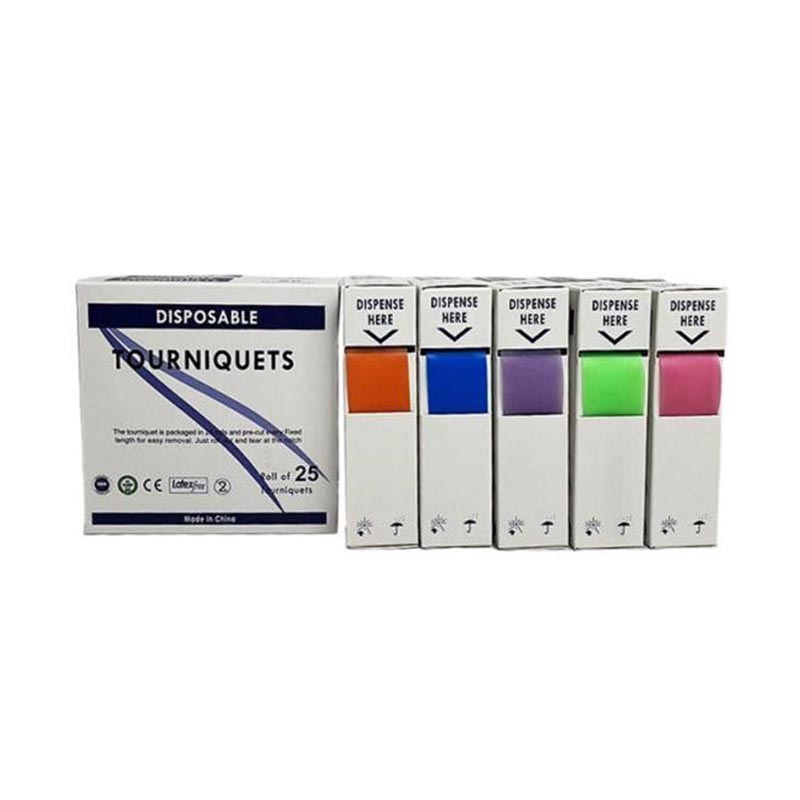Disposable Tourniquet: Items to Check Before Use
2025-07-07
Disposable tourniquets are essential tools in medical and emergency settings, used primarily to control venous and arterial circulation for a limited time to facilitate blood draws or manage bleeding. Despite their simplicity, using them correctly is vital to ensuring safety, hygiene, and effectiveness. Before using a disposable tourniquet, several key items should be checked to guarantee optimal performance and patient care.
1. Packaging Integrity
The first item to check is the condition of the packaging. A disposable tourniquet should always be sealed in sterile packaging. Damaged, torn, or unsealed packaging can compromise sterility, posing a risk of infection to the patient. If the package is not intact, the tourniquet should be discarded and replaced.
2. Expiry Date
All medical disposables, including tourniquets, have a shelf life. Checking the expiry date printed on the packaging ensures that the material retains its elasticity and strength. Expired tourniquets may become brittle, lose their tension, or fail during use, which can hinder medical procedures or compromise patient safety.
3. Material Condition
Upon opening, inspect the tourniquet itself. Look for signs of wear, brittleness, discoloration, or contamination. A clean, smooth, and flexible surface indicates the tourniquet is in good condition. If there are visible defects such as tears or fraying, it should not be used.
4. Elasticity and Tension
Proper elasticity is crucial for a tourniquet to perform its function. Gently stretching the tourniquet helps assess whether it maintains adequate tension. A tourniquet that is too loose or lacks rebound may not be effective in stopping blood flow or aiding in vein location during blood draws.

5. Size and Type
Disposable tourniquets come in various lengths and widths, and some are designed for specific populations, such as pediatric or bariatric patients. Before use, confirm that the tourniquet is appropriate for the intended patient. Using the wrong size may cause discomfort or be ineffective.
6. Latex Content (if applicable)
Some disposable tourniquets are made from latex, which can cause allergic reactions in sensitive individuals. Before application, it is essential to confirm whether the tourniquet is latex-free if the patient has a known latex allergy. This information is typically labeled on the packaging.
7. Single-use Confirmation
Ensure the tourniquet is indeed a disposable, single-use product. Reusing disposable tourniquets can lead to cross-contamination and increases the risk of hospital-acquired infections. Once used, the tourniquet should be discarded appropriately.
Conclusion
Checking these items before using a disposable tourniquet is a small but critical step in ensuring patient safety and procedural effectiveness. From confirming packaging integrity to evaluating the elasticity and material condition, each check helps maintain a high standard of medical care. Proper usage and inspection not only prevent complications but also support the broader goal of infection control in clinical and emergency environments.
As a professional manufacturer and supplier, we provide high-quality products. If you are interested in our products or have any questions, please feel free to contact us.